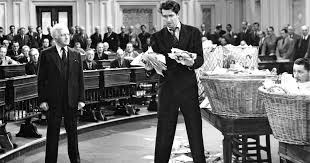|
Once again, a major piece of legislation comes to a grinding halt in the United States Senate. Even though the Democrats control both Houses of Congress and the White House, they have been blocked by the Republicans from passing voting rights legislation. How can the minority party in the Senate hold so much power? Simply put, the Senate filibuster rule. What is the senate filibuster rule, and is it time to reform or eliminate it altogether? In order to answer these questions let’s take a look at the history of the filibuster and give it some perspective. What is the Senate Filibuster: Originally senators had the right to unlimited debate on the Senate floor and could prevent a vote on a bill by running out the clock with prolonged speeches. Under the current rules of the Senate, it takes 60 votes to end debate and move most bills to a vote. Without the 60 votes needed to end debate and move to a vote (a process called “cloture”), the filibuster rule essentially blocks the bill from proceeding. History of the Filibuster: The filibuster is not found in the Constitution and became possible with an inadvertent change to the Senate rules in 1806. Under the original Senate rules, cutting off debate required a motion that passed with a simple majority. The rule was dropped at the suggestion of Vice President Aaron Burr since it was seldom used and apparently not needed, https://www.brookings.edu/policy2020/votervital/what-is-the-senate-filibuster-and-what-would-it-take-to-eliminate-it/. This rule change had the unintended consequence of giving senators the right to unlimited debate without any formal way to end it. Seldom used prior to the Civil War, senators learned that they could prevent a vote on a bill that they opposed by tying up the Senate floor with endless speeches. The “talking filibuster” was born. In 1917 the Senate passed Rule 22, the first cloture rule. This rule allowed debate to end and a vote taken on a pending bill with a two-thirds majority vote by the senators present in the chamber. In 1975 the Senate reduced the number of votes needed to end debate to three-fifths of the senators present. When the Senate is at full strength, 60 votes are required to end debate and put the measure up for vote (invoking cloture). Silent Filibuster: On occasion, senators still take to the Senate floor and give protracted speeches in the style of “Mr. Smith Goes to Washington”. But this is rarely used anymore to prevent a bill from moving forward. It takes 60 senators to invoke cloture and move a bill forward. Therefore, as few as 41 senators can derail any piece of legislation by opposing a cloture motion. In practice, anytime 41 or more senators simply threaten to filibuster a piece of legislation, the Senate majority leader will not bring it up for consideration. In theory, any or all of these senators could filibuster on the Senate floor indefinitely, with no mechanism to end the debate. It would be a waste of time for the Senate to consider a piece of legislation that doesn’t have the 60 votes needed. Exceptions to the Filibuster Rule:
Reasons to Keep the Filibuster Rule: The Senate is often touted as a “deliberative body” and the “consensus-building” chamber of Congress. The very nature of the filibuster rule requires a consensus of 60 or more senators for any major legislation to be passed. Since it is rare for any political party to have a supermajority, the majority party must reach across the aisle and win the support of some members of the minority. This protects the rights of the minority party which may otherwise have no voice in the legislative process. The crafting of legislation is better served through bipartisanship and the give and take of negotiations in the building of a coalition around a piece of legislation. If the traditions of the Senate were practiced, and the political parties were actually interested in building a consensus, then the filibuster rule as it stands would be fine. Reasons to End or Modify the Filibuster Rule:
Proposed Changes to the Filibuster Rule: The Constitution gives each chamber of Congress the right to write its own rules. So, any change to the filibuster must come from the Senate. The process of changing the rules of the Senate is complicated, and not all rules are treated the same. Some can be changed by a simple majority and others require a two-thirds majority vote, https://sgp.fas.org/crs/misc/R42929.pdf. Here are some of the proposed changes to the filibuster that various politicians and think tanks are considering:
If I had my way, I would eliminate the filibuster rule altogether and restore the original Senate rules regarding the motion to end floor debates with a simple majority, the way it was prior to 1806. Short of this, I would eliminate the silent filibuster and make senators stand on the Senate floor and defend their opposition to the pending bill. In recent days President Biden indicated that he would support a change to the filibuster rule in order to get his voting rights legislation pasted. But Democrat Senator Krysten Sinema threw a wet blanket over that idea when she proclaimed in a floor speech that she would not support any changes to the filibuster rule. Democrat Senator Joe Manchin also reiterated his position that he would not support a “carve-out” to exempt voting rights legislation from the filibuster rule. Both Senators Manchin and Sinema support voting rights legislation, but without their support for a change to the filibuster rule, it cannot survive in the face of complete Republican opposition. Another victory for the minority party, and renewed calls to do something about the Senate filibuster rule. If you enjoy reading this type of commentary please subscribe to my blog and tell a friend. You will receive an email notification when new blogs are posted. The email will come from the site’s email: armchairamerican1776 @gmail.com.
Thanks, Armchair American
0 Comments
|
AuthorThe Armchair American. Archives
November 2024
Categories
All
|














 RSS Feed
RSS Feed